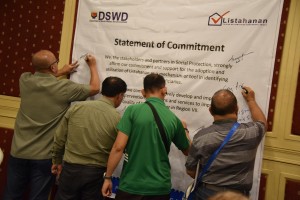The Department of Social Welfare and Development Field Office VII (DSWD-7) identifies 385,534 poor households based on the result of the Listahanan second round of assessment.

The second assessment, which covered 843,275 households in region 7, identified 99,993 households in Bohol; 279,110 households in Cebu and 6,431 households in Siquijor.
“In response to public clamor, we have widen the coverage of our data collection compared to the 1st round of assessment,” said Regional Director Ma. Evelyn Macapobre.
“We are still using the Proxy Means Test model or PMT in treating our data so that we can assure everyone that the identification of the poor, near poor and the non-poor households are done scientifically,” Macapobre shared.
PMT is a statistical model that estimates the income of household based on the variables included in the family assessment form.
Households with estimated incomes that are equal to and above the latest provincial poverty thresholds are considered non-poor and those with estimated incomes falling below the poverty thresholds are considered poor.
Macapobre further explained that to ensure transparency and accuracy in the data-gathering process, the assessment also involved public validation of the initial list of poor generated from the assessment during the validation and finalization phase.
“Aside from the demographics of the population covered in Listahanan, other information such as access to safe water and electricity, quality of housing materials, tenure status of the family’s house and lot and their specific occupation are available upon request,” Dir. Macapobre said.
“We all know that the resources of the country is limited. In order to produce greater impact and minimize wastage of resources we need to do focus targeting and this is where Listahanan comes in,” Dir. Macapobre underscored.
The list of names and addresses of identified poor households can only be obtained upon execution of a data sharing agreement with the DSWD-7.
This is to protect the integrity of the data and to ensure that the list will be only used for implementation of social protection programs and services meant to improve their well-being.
The Listahanan or the National Household Targeting System for Poverty Reduction (NHTS-PR) is an administrative tool that identifies who and where poor households are in the country. ###
(11) Views